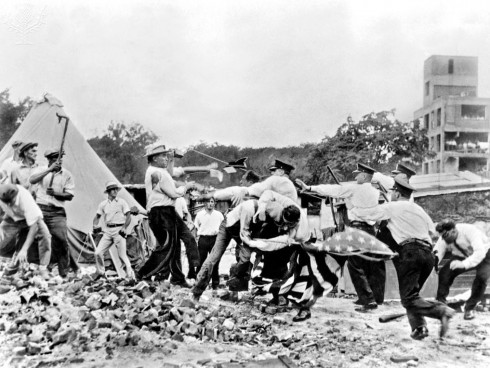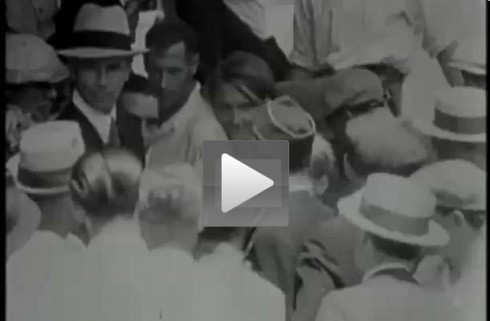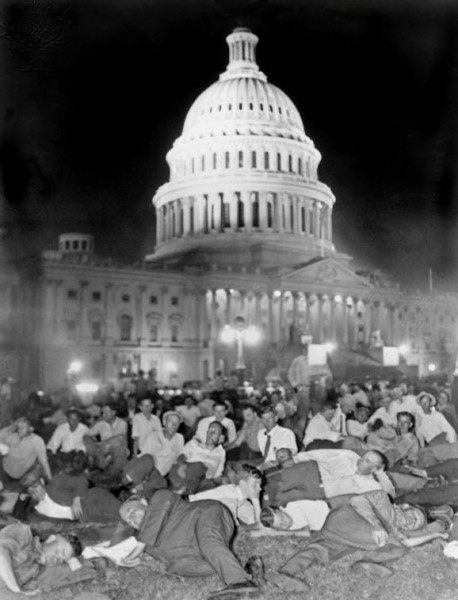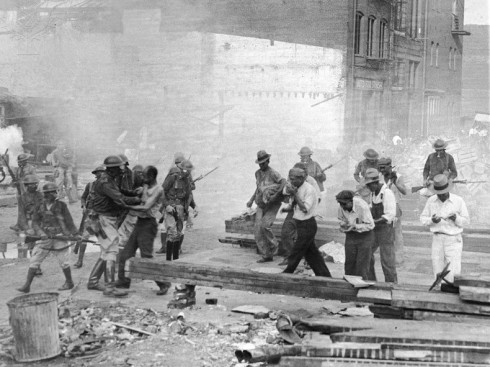
- Bonus Army veterans battle with Washington, D.C. police officers at one of their camps. The abandoned Treasury Department building, occupied by members of the Bonus Army, can be seen in the background. 1932. (Underwood Archives\Universal Images Group) Photograph courtesy of ImageQuest database.
From The American Century: A History of the United States Since the 1890s/LaFeber, Walter; Polenberg, Richard; Woloch, Nancy
The bonus issue had originated in 1924 when Congress, over Coolidge’s veto, promised a bonus of several hundred dollars (depending on length of military service) to World War I veterans, but deferred payment until 1945. By 1932, however, many unemployed veterans wanted to be paid immediately, since they considered the money rightfully theirs and desperately needed it. When Congress took up a bill providing immediate payment, 15,000 veterans (some accompanied by their wives and children) converged on Washington, D.C. to lobby for passage. They set up camp on the lawn of the Capital, occupied an abandoned Treasury Department building, and built a “Hooverville” across the Anacostia River. They became known as the Bonus Army.
The veterans aroused considerable sympathy, but the Hoover administration believed the case against them to be overwhelming: payment of the bonus would wreck hopes for a balanced budget, give preferential treatment to veterans over other needy citizens, and entitle those veterans who were well-off to payment at a time of declining tax revenues.
Although the House passed the bonus bill, the Senate rejected the measure on June 17, 1932 by a large margin. The presence of the Bonus Army embarrassed and frightened the Hoover administration. Ultimately the government increased its pressure on the veterans, demanding that they leave. The evacuation led to a scuffle with the local police in which two veterans were killed. On July 28, 1932, General Douglas MacArthur led cavalry and infantry troops, as well as a mounted machine-gun squadron down Pennsylvania Avenue. With bayonets and tear gas, the soldiers forced the veterans out of the business district and across the bridge to Anacostia and then set fire to the encampment.


World War I veterans, who are members of the Bonus Army, bed down for the night on the Capitol grounds. Washington, D.C., 1932. (Underwood Archives\Universal Images Group) Photograph courtesy of ImageQuest database.

Soldiers in gas masks advance on World War I Bonus March demonstrators in Washington, D.C., July 1932. (Photo by Jack Benton/Getty Images) Photograph courtesy of ImageQuest database.

Comments
One response to “The Bonus Army”
What an interesting and informative post! I had never heard of the Bonus Army before. Thanks for teaching me something new today.